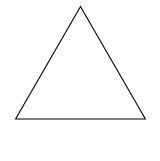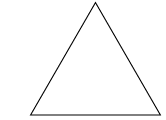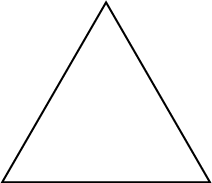|
4. TRIANGLES
|
||||||||||||||||||
|
We now use the word triangle to signify ‘equilateral triangle’. We also use x-triangle to denote a triangle of side length x. Many dissections are based on ‘natural’ partitions of the triangle. Here are two examples. Try solving the problem yourself. You can give yourself partial clues by clicking successively the numbers on the right. Problem T2. Dissect a 2-triangle into a 1-triangle and a |
||||||||||||||||||
|
Again, try solving the problem yourself. A stepped solution is given at left. We notice that if we draw an altitude to this triangle we obtain a triangle with sides in the ratio 2 : 1 : There is another way of stating dissection problems. Problem T3. Give a 4-piece triangle dissection for 12 + 22 + 22 = 32. Here we seek to dissect a 3-triangle into two 2-triangles and a 1-triangle. The squares in the equation are proportional to the areas. The solution is quite trivial. It is also posible to dissect a triangle into smaller triangles of all different sizes. We look at a special case of this next. |
|
||||||||||||||||


